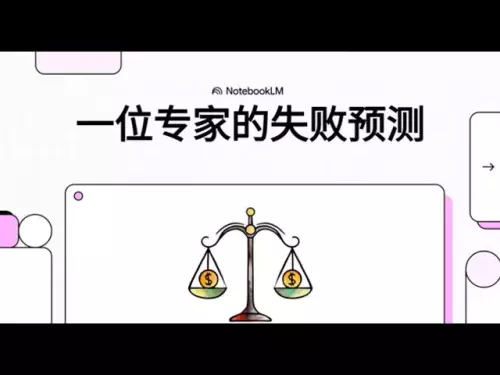-
 Bitcoin
Bitcoin $110500
1.21% -
 Ethereum
Ethereum $4269
-1.99% -
 Tether USDt
Tether USDt $1.000
-0.01% -
 XRP
XRP $2.806
1.58% -
 BNB
BNB $848.8
0.12% -
 Solana
Solana $205.0
2.71% -
 USDC
USDC $0.9999
-0.01% -
 TRON
TRON $0.3365
-0.15% -
 Dogecoin
Dogecoin $0.2108
-0.78% -
 Cardano
Cardano $0.8178
0.95% -
 Chainlink
Chainlink $22.95
0.73% -
 Hyperliquid
Hyperliquid $43.95
-0.16% -
 Ethena USDe
Ethena USDe $1.001
0.01% -
 Bitcoin Cash
Bitcoin Cash $582.9
6.50% -
 Sui
Sui $3.253
0.97% -
 Stellar
Stellar $0.3594
1.28% -
 Avalanche
Avalanche $23.77
1.08% -
 Hedera
Hedera $0.2137
-1.08% -
 UNUS SED LEO
UNUS SED LEO $9.532
-0.57% -
 Cronos
Cronos $0.2497
-6.91% -
 Litecoin
Litecoin $109.8
0.63% -
 Toncoin
Toncoin $3.146
0.29% -
 Shiba Inu
Shiba Inu $0.00001231
1.40% -
 Polkadot
Polkadot $3.748
0.45% -
 Uniswap
Uniswap $9.423
0.26% -
 Bitget Token
Bitget Token $5.073
8.32% -
 World Liberty Financial
World Liberty Financial $0.2231
2.87% -
 Dai
Dai $0.9998
0.00% -
 Monero
Monero $263.0
0.88% -
 Aave
Aave $311.6
1.13%
What is the difference between anonymity and pseudonymity in blockchain?
Monero and Zcash use advanced cryptography to ensure true anonymity, making transaction details untraceable, unlike Bitcoin’s pseudonymous, traceable addresses.
Sep 02, 2025 at 08:18 pm
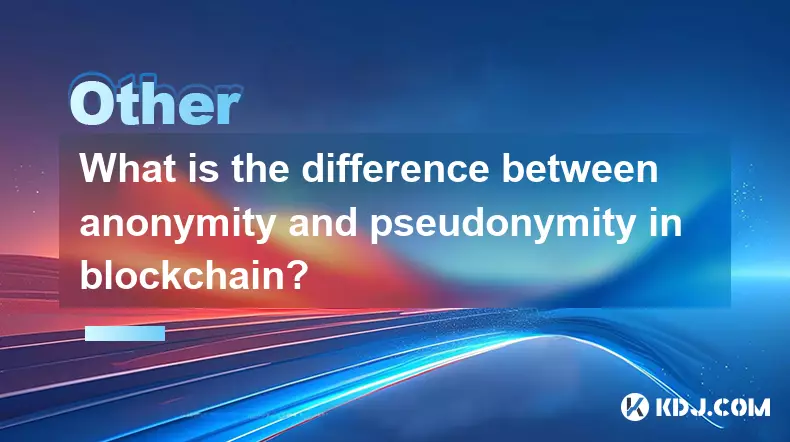
Understanding Anonymity in Blockchain Systems
1. Anonymity refers to the condition where a user's identity is entirely concealed during transactions. In a truly anonymous blockchain system, no personal information is linked to the transaction data, making it impossible to trace activities back to an individual.
2. Some blockchains are designed with advanced cryptographic techniques such as zero-knowledge proofs or ring signatures to ensure complete privacy. These mechanisms allow verification of transactions without revealing sender, receiver, or amount.
3. Examples include privacy-focused cryptocurrencies like Monero and Zcash, which implement protocols specifically to obscure transaction details and prevent external analysis.
4. The goal of anonymity is to provide maximum privacy, shielding users from surveillance, tracking, or profiling by third parties including governments, corporations, or malicious actors.
5. However, full anonymity raises concerns related to regulatory compliance, money laundering, and illicit activities, leading to increased scrutiny from financial authorities worldwide.
The Nature of Pseudonymity in Public Blockchains
1. Pseudonymity means that users operate under persistent identifiers—typically wallet addresses—instead of real-world identities. These addresses appear as random strings of characters on the blockchain ledger.
2. While the actual name or personal details of a user aren't stored on-chain, repeated use of the same address can allow behavioral analysis and linkage of transactions over time.
3. Bitcoin is a prime example of a pseudonymous system; all transactions are publicly recorded, and if an address is ever linked to a real identity, the entire transaction history becomes traceable.
4. Chain analysis firms leverage data clustering, input-output patterns, and metadata to de-anonymize users, effectively reducing the privacy promised by pseudonymity.
5. Exchanges that require KYC (Know Your Customer) procedures further weaken pseudonymity, as they create bridges between digital identities and government-issued IDs.
Key Differences in Practical Applications
1. Anonymity ensures that even with full access to the blockchain data, no entity can determine who sent or received funds, while pseudonymity only hides direct identity but allows traceability through address patterns.
2. In anonymous networks, transaction graph analysis fails due to obfuscation layers, whereas in pseudonymous systems, forensic tools can often reconstruct user behavior and map financial relationships.
3. Regulatory bodies tend to oppose fully anonymous blockchains, citing anti-money laundering (AML) requirements, while pseudonymous systems are more widely accepted due to their auditability.
4. Developers building decentralized applications must consider these models when designing for privacy, compliance, or user trust, as choosing between anonymity and pseudonymity impacts both functionality and legal risk.
5. Users seeking privacy may combine pseudonymous blockchains with mixers or coinjoin techniques to enhance obfuscation, though these methods are not foolproof and may attract regulatory attention.
Frequently Asked Questions
Can a pseudonymous blockchain become anonymous?Not inherently. Pseudonymous blockchains record transparent transaction histories. While additional tools like mixers or privacy wallets can improve privacy, they don't transform the underlying protocol into an anonymous one.
Are anonymous blockchains illegal?No, they are not universally illegal. However, several jurisdictions have restricted or banned privacy coins due to concerns over criminal misuse. Legality depends on local regulations and enforcement policies.
How do exchanges affect blockchain privacy?Exchanges often require identity verification, which links wallet addresses to real individuals. This connection undermines both pseudonymity and anonymity when funds move between private wallets and centralized platforms.
Is it possible to track transactions on Monero?Due to its use of ring signatures, stealth addresses, and confidential transactions, tracking sender, receiver, or amount on Monero's blockchain is computationally infeasible for external observers.
Disclaimer:info@kdj.com
The information provided is not trading advice. kdj.com does not assume any responsibility for any investments made based on the information provided in this article. Cryptocurrencies are highly volatile and it is highly recommended that you invest with caution after thorough research!
If you believe that the content used on this website infringes your copyright, please contact us immediately (info@kdj.com) and we will delete it promptly.
- Stablecoin Showdown: South Korea's Institutional Crypto Race
- 2025-09-03 02:45:12
- Bitcoin Price Prediction, Pepeto Buy: Navigating the Crypto Hype
- 2025-09-03 02:45:12
- PTB Tokenomics: Redefining DeFi Adoption and Value Capture
- 2025-09-03 03:05:12
- AI, XRP, and Predictions: Decoding the Crypto Crystal Ball
- 2025-09-03 03:05:12
- Trump Media, Cronos Crypto, and the Treasury: A New Era?
- 2025-09-03 02:30:12
- Solana's Alpenglow Upgrade: Is SOL About to Leave ETH in the Dust?
- 2025-09-03 03:16:16
Related knowledge

How do you participate in a project's governance?
Sep 02,2025 at 09:01pm
Understanding Governance in Blockchain Projects1. Governance in blockchain ecosystems allows token holders to influence the direction and policies of ...

What is the difference between lending and borrowing in DeFi?
Sep 03,2025 at 12:00am
Understanding DeFi Lending Mechanisms1. DeFi lending allows users to supply their crypto assets to a liquidity pool in exchange for interest payments....
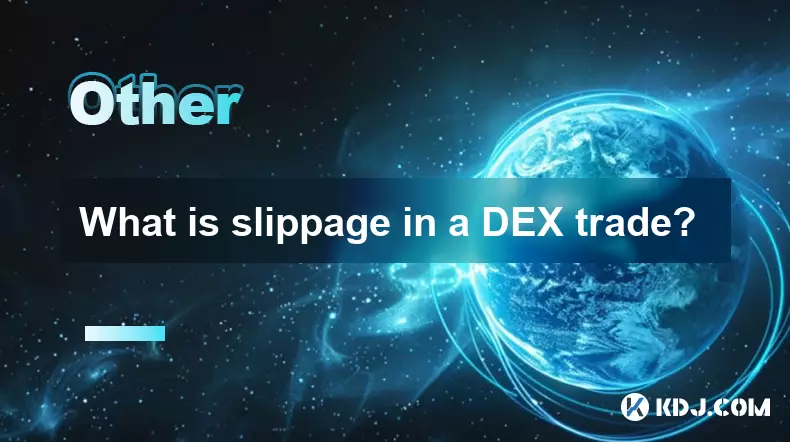
What is slippage in a DEX trade?
Sep 02,2025 at 06:18pm
Understanding Slippage in Decentralized Exchanges1. Slippage refers to the difference between the expected price of a trade and the actual price at wh...
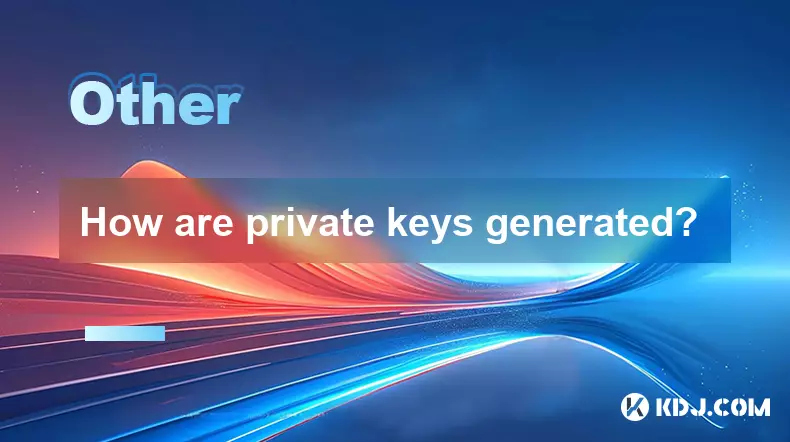
How are private keys generated?
Sep 02,2025 at 10:00pm
Understanding the Basics of Private Key Generation1. Private keys in the cryptocurrency world are generated using cryptographic algorithms designed to...
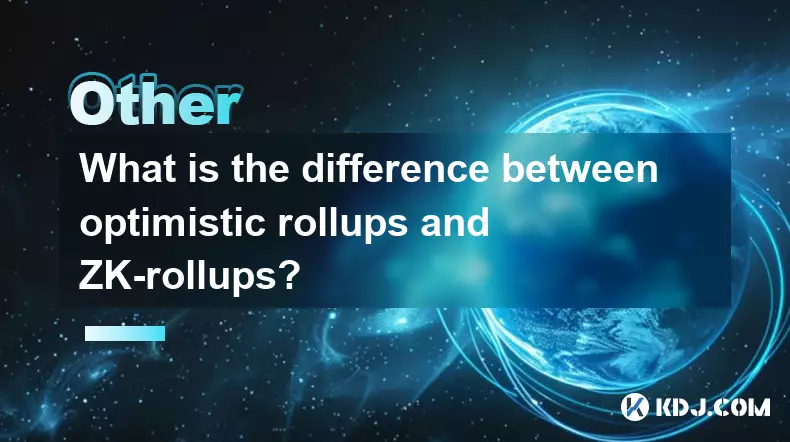
What is the difference between optimistic rollups and ZK-rollups?
Sep 03,2025 at 02:18am
Understanding Layer-2 Scaling Solutions in the Blockchain EcosystemBlockchain networks like Ethereum face persistent challenges related to scalability...

How does a privacy coin work?
Sep 02,2025 at 10:36pm
Understanding the Mechanics of Privacy Coins1. Privacy coins are designed to obscure transaction details on a blockchain, making it difficult to trace...

How do you participate in a project's governance?
Sep 02,2025 at 09:01pm
Understanding Governance in Blockchain Projects1. Governance in blockchain ecosystems allows token holders to influence the direction and policies of ...

What is the difference between lending and borrowing in DeFi?
Sep 03,2025 at 12:00am
Understanding DeFi Lending Mechanisms1. DeFi lending allows users to supply their crypto assets to a liquidity pool in exchange for interest payments....

What is slippage in a DEX trade?
Sep 02,2025 at 06:18pm
Understanding Slippage in Decentralized Exchanges1. Slippage refers to the difference between the expected price of a trade and the actual price at wh...

How are private keys generated?
Sep 02,2025 at 10:00pm
Understanding the Basics of Private Key Generation1. Private keys in the cryptocurrency world are generated using cryptographic algorithms designed to...

What is the difference between optimistic rollups and ZK-rollups?
Sep 03,2025 at 02:18am
Understanding Layer-2 Scaling Solutions in the Blockchain EcosystemBlockchain networks like Ethereum face persistent challenges related to scalability...

How does a privacy coin work?
Sep 02,2025 at 10:36pm
Understanding the Mechanics of Privacy Coins1. Privacy coins are designed to obscure transaction details on a blockchain, making it difficult to trace...
See all articles





















![[Pycoin] PI Coin -Start introduction of practical use (emergency)?! Now .. 'Here' first you can use it first / How to accelerate mining #paikoin [Pycoin] PI Coin -Start introduction of practical use (emergency)?! Now .. 'Here' first you can use it first / How to accelerate mining #paikoin](/uploads/2025/09/02/cryptocurrencies-news/videos/pycoin-pi-coin-start-introduction-practical-emergency-accelerate-mining-paikoin/68b6ea848f2d1_image_500_375.webp)




